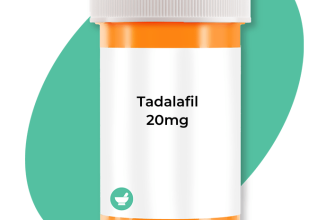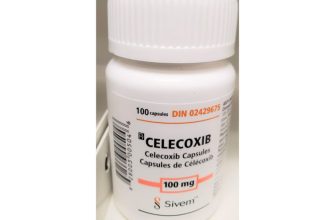Focus on building a compliant online pharmacy. Establishing a reputable platform is critical for selling Viagra. Ensure your site adheres to local regulations and obtains necessary licenses. This step not only protects your business but also builds trust with your customers.
Next, provide clear guidelines on prescription requirements. Selling Viagra legally online means you must require customers to present a valid prescription. Offer an easy process for obtaining prescriptions through licensed healthcare professionals. This will foster credibility and reduce the risk of legal issues.
Use effective marketing strategies to reach your target audience. Utilize SEO techniques to make your website more discoverable. Create informative content that addresses common concerns about erectile dysfunction and the benefits of Viagra. Engage customers through social media by sharing testimonials and educational posts.
Implement secure payment options to enhance customer confidence. Prioritize encryption technologies to protect sensitive information. Showcasing a commitment to customer privacy will reinforce trust in your brand.
Lastly, focus on exceptional customer service. Providing prompt support and a hassle-free return policy plays a significant role in customer satisfaction. Happy customers are likely to return and recommend your services to others, driving continuous sales.
- How to Sell Viagra Online
- Understanding the Legal Framework for Selling Viagra
- Choosing the Right E-commerce Platform for Your Business
- Scalability and Flexibility
- User-Friendly Interface
- Establishing a Reliable Supply Chain for Viagra
- Steps to Create a Solid Supply Chain
- Maintaining Strong Relationships
- Creating a User-Friendly Website and Checkout Process
- Implementing Effective Digital Marketing Strategies
- Content Marketing
- Email Campaigns
- Utilizing Influencer Marketing
- Ensuring Customer Privacy and Data Security
- Managing Customer Communications and Support
- Evaluating Performance and Adapting Your Sales Strategies
- Assessing Marketing Channels
- Feedback and Customer Insights
How to Sell Viagra Online
Choose a legitimate online pharmacy platform that complies with regulations. Ensure the site is licensed and has secure payment processing options to build trust with potential customers.
Create informative content about Viagra, including its uses, benefits, and potential side effects. Address common questions and concerns to help visitors make informed decisions.
Utilize SEO techniques to enhance visibility. Research keywords that potential customers might use and incorporate them into your site content, product descriptions, and blog articles.
Implement a user-friendly design. Make navigation simple, with clear categories for different medications, easy access to customer support, and straightforward ordering processes.
Engage in targeted online advertising. Use platforms like Google Ads or social media to reach specific demographics. Tailor your messaging to appeal directly to potential customers who may need the product.
Build trust through customer testimonials and reviews. Showcase positive experiences from previous buyers to establish credibility and encourage new customers to make a purchase.
Offer promotions or discounts to first-time buyers. This can incentivize them to try your service and increase overall sales.
Ensure a streamlined delivery process. Provide clear timelines for shipping and handling to manage customer expectations effectively.
Comply with legal regulations regarding prescription medications. Require customers to submit valid prescriptions when necessary, and ensure your practices align with healthcare laws.
Understanding the Legal Framework for Selling Viagra
Ensure compliance with local laws before selling Viagra online. Obtain the necessary licenses for pharmaceutical sales in your jurisdiction. Research specific regulations concerning prescription medications to avoid legal issues.
Verify that customers have valid prescriptions. Many countries require a prescription for Viagra. Establish a process to confirm prescriptions through licensed healthcare providers. This safeguards your business and protects consumer safety.
Familiarize yourself with advertising regulations related to prescription drugs. Many regions have strict guidelines on how to promote Viagra. Avoid making misleading claims about effectiveness or safety. Transparency builds trust and avoids legal repercussions.
Implement a robust privacy policy. Protecting customer data is paramount. Ensure compliance with data protection laws, such as GDPR in Europe, to maintain consumer confidence and avoid fines.
Explore different shipping regulations. Often, sending prescription medications across state or country lines has specific requirements. Consult with a legal expert to ensure your shipping practices meet all legal standards.
Keep records of all transactions and customer interactions. Documentation can be crucial in case of disputes or audits. Maintain organized files for prescriptions, sales, and customer inquiries to demonstrate compliance and transparency.
Engage with legal professionals who specialize in pharmaceutical law. Their expertise can help clarify regulations and provide guidance tailored to your business needs.
Choosing the Right E-commerce Platform for Your Business
Select a platform that offers robust security features. Ensure it supports encrypted transactions and complies with the necessary regulations for selling pharmaceutical products online. Look for platforms that provide SSL certificates and secure payment gateways to protect customer information.
Scalability and Flexibility
Choose a platform that accommodates growth. If your business expands, you want technology that can scale with your needs. Consider platforms that offer customizable features, enabling you to adapt your online store as customer demand and product offerings evolve.
User-Friendly Interface
Opt for an e-commerce platform with an intuitive interface. A user-friendly design allows for easy navigation, making it simpler for customers to find and purchase products. This aspect directly impacts conversion rates, so prioritize platforms that simplify the shopping experience.
Establishing a Reliable Supply Chain for Viagra
Identify and partner with licensed pharmaceutical manufacturers. Verify their credentials and compliance with regulatory standards to ensure product quality and consumer safety.
Steps to Create a Solid Supply Chain
- Research Suppliers: Look for manufacturers that have a proven track record in producing Viagra or similar medications. Check reviews and ratings.
- Verify Licensing: Ensure all partners hold necessary licenses and certifications for pharmaceutical production.
- Request Samples: Before committing, obtain product samples to test quality and packaging methods.
- Negotiate Agreements: Set clear terms regarding pricing, payment methods, delivery timelines, and return policies.
- Evaluate Distribution Channels: Assess the best logistic options for distributing Viagra to your customers, focusing on speed and reliability.
- Implement Quality Control: Establish procedures to conduct regular quality checks and ensure compliance with safety regulations.
Maintaining Strong Relationships
Communicate regularly with suppliers to build trust and address any issues promptly. Offering feedback can help improve product quality and service. Schedule periodic reviews to evaluate performance and make adjustments if necessary.
Incorporate advanced tracking systems for inventory management. Use software that provides real-time insights into stock levels and order status to prevent disruptions.
Train your team on compliance regulations and best practices. This education is crucial for maintaining standards and ensuring a smooth operation at all levels.
Focus on establishing a reliable supply chain by systematically following these guidelines, ensuring your customers receive high-quality Viagra in a timely manner.
Creating a User-Friendly Website and Checkout Process
Focus on simplicity in design. Use a clean layout that highlights key products and information. Ensure that navigation menus are intuitive, allowing users to locate desired items quickly. Present a clear call to action on product pages to guide customers toward making a purchase.
Optimize webpage loading speed. Slow sites lead to high bounce rates. Utilize tools like Google PageSpeed Insights to identify areas for improvement. Compress images and minimize JavaScript to enhance performance.
Incorporate a responsive design. Ensure the website operates seamlessly across devices. Test your website on tablets and smartphones to verify usability and display adjustments.
Design the checkout process with minimal steps. A lengthy or complicated checkout can deter buyers. Limit required fields to essential information; ask for additional details only after the purchase is confirmed.
| Action | Benefit |
|---|---|
| Simplify navigation | Enhances user experience |
| Optimize speed | Reduces bounce rates |
| Implement responsive design | Improves mobile access |
| Streamline checkout | Increases conversion rates |
Provide multiple payment options. Customers appreciate flexibility. Include credit cards, PayPal, and secure alternatives to accommodate preferences. Display security badges to instill trust and confidence.
Ensure transparency throughout the checkout process. Clearly outline shipping costs and delivery times before finalizing the transaction. Customers prefer understanding the total price upfront.
Finally, offer customer support during checkout. Implement live chat functionality to assist users with any questions. Quick assistance can alleviate concerns and increase the likelihood of completing a purchase.
Implementing Effective Digital Marketing Strategies
Leverage targeted ads on social media platforms like Facebook and Instagram to reach potential customers looking for erectile dysfunction solutions. Use demographic filters to narrow down your audience based on age, interests, and location, ensuring that your ads are seen by those most likely to engage.
Content Marketing
Create informative content that addresses common questions and concerns about Viagra. Blog posts or articles that discuss usage, benefits, and side effects not only establish your authority but also provide value to your audience. Use SEO techniques to optimize your content for search engines, incorporating relevant keywords that potential customers search for.
Email Campaigns
Build and maintain an email list targeting interested users. Send regular newsletters featuring promotions, educational content, and success stories. Personalize your emails to increase engagement, and include clear calls to action that direct recipients to your sales pages.
- Segment your email list for better targeting.
- Monitor open rates and adjust your content accordingly.
- Test different subject lines to discover what resonates with your audience.
Participate in forums and communities related to men’s health. Offering advice and answering questions can establish trust and position your brand as a go-to resource. Be sure to include links to your website in your profile or signature.
Utilizing Influencer Marketing
Collaborate with health and wellness influencers who resonate with your target audience. Their endorsement can reach a wider audience and build credibility for your product. Ensure that the influencers provide authentic reviews and experiences to connect with their followers effectively.
Measure and analyze your marketing efforts using tools like Google Analytics. Track website traffic, conversion rates, and user behavior. Adjust your strategies based on the data to continually optimize your approach.
Ensuring Customer Privacy and Data Security
Implement SSL certificates to encrypt customer data during transactions. This ensures that sensitive information remains secure and cannot be intercepted by third parties. Display security badges on your site to build trust with users.
Utilize strong authentication methods, such as two-factor authentication (2FA), when customers create accounts or log in. This adds an additional layer of security, protecting personal information from unauthorized access.
Regularly update your website and plugins to fix vulnerabilities. Employ a dedicated team or hire cybersecurity professionals to assess your site’s security protocols frequently. Conduct penetration testing to identify and rectify weaknesses.
Adopt a strict privacy policy detailing how customer information is collected, used, and stored. Ensure it complies with regulations like GDPR or HIPAA, as appropriate for your market. Be transparent about data processing activities and allow customers to control their information.
Implement data minimization techniques. Only collect necessary information from customers. Avoid retaining personal data longer than needed, and securely delete it when it is no longer required.
Train your team on data protection strategies. Foster a culture of security awareness, emphasizing the risks of phishing and social engineering attacks to prevent data breaches.
Be responsive to any data breach incidents. Establish a clear protocol for notifying affected customers promptly, as well as rectifying the vulnerabilities that led to the breach.
Managing Customer Communications and Support
Utilize multiple communication channels to engage with customers effectively. Implement live chat on your website, allowing instant interaction. This enhances customer satisfaction and decision-making speed. Create a dedicated email support address to address inquiries thoroughly. Aim for prompt responses, ideally within 24 hours.
Develop an FAQ section that addresses common concerns regarding product use and shipping. This resource saves time for both customers and your support team. Consider integrating chatbots for initial inquiries, directing complex questions to human representatives when necessary.
Encourage customer feedback after interactions. This insight helps improve your support strategies and identifies any gaps in communication. Use social media platforms for updates and customer engagement, showcasing testimonials to build trust.
Train your support team on product knowledge and customer service skills. Equip them to handle inquiries sensitively and professionally, especially given the nature of the product. Regular training sessions keep them informed about updates and changes in policies.
Implement a ticketing system for inquiries to streamline tracking and resolution. Monitor trends over time to identify frequently asked questions or recurring issues. By analyzing this data, you can proactively enhance customer experience and reduce support load.
Evaluating Performance and Adapting Your Sales Strategies
Regularly analyze your sales metrics to identify trends. Track key performance indicators (KPIs) such as conversion rates, average order value, and customer acquisition costs. Use tools like Google Analytics to gain insights into user behavior on your site, focusing on which products receive the most attention.
Assessing Marketing Channels
Examine the effectiveness of various marketing channels, including social media, email campaigns, and paid ads. Determine which platforms drive the most traffic and conversions. If a specific channel consistently underperforms, consider reallocating your budget or testing alternative strategies.
Feedback and Customer Insights
Gather feedback from customers to fine-tune your approach. Conduct surveys and analyze reviews to understand their preferences and pain points. Implement changes based on this feedback to enhance the user experience and meet customer expectations.
Regularly reviewing and adjusting your strategies based on analytics and customer input keeps your sales efforts aligned with market demands. Stay proactive in adapting your tactics as you refine your online presence and improve sales outcomes.










